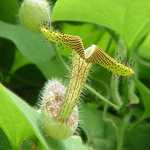- Learn English
-

Learn grammar
-

List of words
-

Study your cards
-

Hang On, Man!
-

Audio Books
-

More apps
- Recent searches
-
fancy
-
endemic
-
poise
-
testimonial
-
douse
-
tip
-
perception
-
did
-
way out
-
ended
- Hide translation

 quarantine
quarantine /ˈkwɔrənˌtiːn/
quarantine
quarantine /ˈkwɔrənˌtiːn/
noun
-
Isolation to prevent the spread of infectious disease
 (
quarantine
)
(
quarantine
)
isolation to prevent the spread of infectious disease
 Due to the recent outbreak, the city was put under a two-week quarantine.
Due to the recent outbreak, the city was put under a two-week quarantine.
Due to the recent outbreak, the city was put under a two-week quarantine.

-
Enforced isolation of patients suffering from a contagious disease in order to prevent the spread of disease
 (
quarantine
)
(
quarantine
)
enforced isolation of patients suffering from a contagious disease in order to prevent the spread of disease
 Travelers were put into quarantine due to a sudden outbreak.
Travelers were put into quarantine due to a sudden outbreak.
Travelers were put into quarantine due to a sudden outbreak.

verb
-
Place into enforced isolation, as for medical reasons
 (
quarantine
)
(
quarantine
)
place into enforced isolation, as for medical reasons
 My dog was quarantined before he could live in England
My dog was quarantined before he could live in England
My dog was quarantined before he could live in England

 tenebrionid
tenebrionid /tɛnɪˈbraɪənɪd/
tenebrionid
tenebrionid /tɛnɪˈbraɪənɪd/
noun
-
Sluggish hard-bodied black terrestrial weevil whose larvae feed on e.g. decaying plant material or grain
 (
darkling beetle
, darkling groung beetle
, tenebrionid
)
(
darkling beetle
, darkling groung beetle
, tenebrionid
)
sluggish hard-bodied black terrestrial weevil whose larvae feed on e.g. decaying plant material or grain


 live-bearer
live-bearer /ˈlaɪvˌbɛərər/
live-bearer
live-bearer /ˈlaɪvˌbɛərər/
noun
-
Small usually brightly-colored viviparous surface-feeding fishes of fresh or brackish warm waters; often used in mosquito control
 (
live-bearer
, poeciliid
, poeciliid fish
, topminnow
)
(
live-bearer
, poeciliid
, poeciliid fish
, topminnow
)
small usually brightly-colored viviparous surface-feeding fishes of fresh or brackish warm waters; often used in mosquito control


 class Dicotyledonae
class Dicotyledonae /klæs daɪˌkɒtɪˈliːdəneɪ/
class Dicotyledonae
class Dicotyledonae /klæs daɪˌkɒtɪˈliːdəneɪ/
noun
-
Comprising seed plants that produce an embryo with paired cotyledons and net-veined leaves; divided into six (not always well distinguished) subclasses (or superorders): Magnoliidae and Hamamelidae (considered primitive); Caryophyllidae (an early and distinctive offshoot); and three more or less advanced groups: Dilleniidae; Rosidae; Asteridae
 (
class Dicotyledonae
, class Dicotyledones
, class Magnoliopsida
, Dicotyledonae
, Dicotyledones
, Magnoliopsida
)
(
class Dicotyledonae
, class Dicotyledones
, class Magnoliopsida
, Dicotyledonae
, Dicotyledones
, Magnoliopsida
)
comprising seed plants that produce an embryo with paired cotyledons and net-veined leaves; divided into six (not always well distinguished) subclasses (or superorders): Magnoliidae and Hamamelidae (considered primitive); Caryophyllidae (an early and distinctive offshoot); and three more or less advanced groups: Dilleniidae; Rosidae; Asteridae


